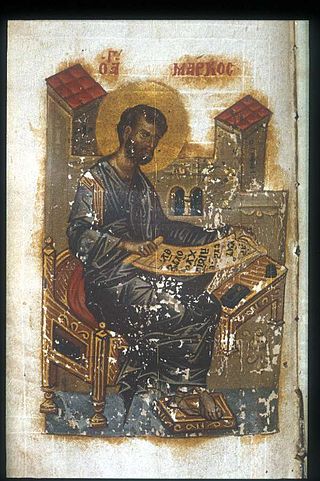
Codex Macedoniensis or Macedonianus designated by Y or 034, ε 073, is a Greek uncial manuscript of the Gospels, dated palaeographically to the 9th century. The manuscript is lacunose.

Uncial 053 (in the Gregory-Aland numbering), A4 (Soden), is a Greek uncial manuscript of the New Testament, dated paleographically to the 9th century.
Uncial 079, ε 16 (Soden), is a Greek uncial manuscript of the New Testament, dated paleographically to the 6th century.

Uncial 0130, ε 80 (Soden), is a Greek uncial manuscript of the New Testament, dated palaeographically to the 9th-century. Formerly it was labelled by Wc.
Uncial 0143, ε 08 (Soden), is a Greek uncial manuscript of the New Testament, dated paleographically to the 6th century.

Uncial 0238, is a Greek-Coptic uncial manuscript of the New Testament. Paleographically it has been assigned to the 8th century.
Uncial 0248, is a Greek uncial manuscript of the New Testament. Paleographically it has been assigned to the 9th century.

Uncial 0249, is a Greek uncial manuscript of the New Testament. Paleographically it has been assigned to the 10th century.
Uncial 0297, is a Greek uncial manuscript of the New Testament. Palaeographically it has been assigned to the 9th century.

Uncial 0303, is a Greek uncial manuscript of the New Testament. Paleographically it has been assigned to the 7th century.
Uncial 0305, is a Greek uncial manuscript of the New Testament. The survived fragment is too brief for certain dating on a basis of Paleography.

Minuscule 45, ε 442, is a Greek minuscule manuscript of the New Testament, on parchment leaves. Palaeographically it has been assigned to the 13th century. It has complex contents and full marginalia.

Minuscule 46, ε 1285, is a Greek minuscule manuscript of the New Testament, on parchment leaves. Paleographically it has been assigned to the 13th century. It has complex contents and full marginalia.
Minuscule 53, ε 444, is a Greek minuscule manuscript of the New Testament, on parchment leaves. Palaeographically it has been assigned to the 13th or 14th century. It has marginalia.
Minuscule 54, ε 445, is a Greek minuscule manuscript of the New Testament, on parchment leaves. It is dated by a colophon to the year 1337 or 1338. It has complex contents and marginalia.
Minuscule 55, ε 349, is a Greek minuscule manuscript of the New Testament, on parchment leaves. Palaeographically it has been assigned to the 14th century. The manuscript has complex contents and some marginalia. It was adapted for liturgical use.

Lectionary 5, designated by siglum ℓ5. It is a Greek manuscript of the New Testament, on vellum leaves. Palaeographically it has been assigned to the 10th-century.
Lectionary 22, designated by siglum ℓ22. It is a Greek manuscript of the New Testament, on vellum leaves. Palaeographically it has been assigned to the 14th-century.
Lectionary 26, designated by siglum ℓ26. It is a Greek manuscript of the New Testament, on vellum leaves. Palaeographically it has been assigned to the 13th-century.
Lectionary 27, designated by siglum ℓ27, is a Greek manuscript of the New Testament, on parchment leaves. Palaeographically it has been assigned to the 14th-century.









